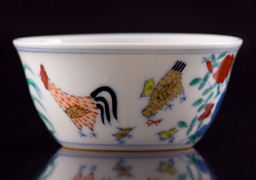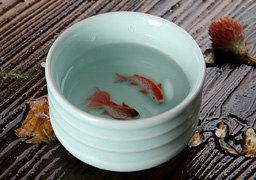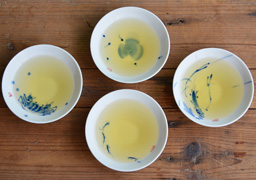The great Jingdezhen kilns that had supplied the most artistically advanced ceramics to the world for centuries were largely destroyed during the dislocations that led to the fall of the Ming Dynasty (1368 – 1644). Fortunately, the Manchu rulers of the new Qing (pronounced Ching) Dynasty (1644 - 1911) were enthusiastic patrons of the arts. The Imperial Porcelain factories were rebuilt under the Kangxi emperor and production resumed in 1683.
The peak of Chinese ceramic production was seen in the reigns of Kangxi (1661-1722), Yongzheng (1722-1735), and Qianlong (1735-1796) during which improvement was seen in almost all ceramic types, including the blue and white wares, polychrome wares, etc. The improved enamel glazes of early Qing Dynasty being fired at a higher temperature also acquired a more brilliant look than those of the Ming Dynasty.
During the Qing Dynasty, potters began using bright colors to adorn plates and vases with meticulously painted scenes. Porcelain ceramicists continued developing five-colored ware by applying a variety of underglaze pigments to floral, landscape, and figurative scenes - a style which was (and is) highly sought-after in the West.
The development of fencai (粉彩) enamel was one of the most significant technical contributions made to ceramics during the Qing period. Since the colors appeared softer than those of five-colored wares, fencai is also known as soft color (軟彩). The new opaque colors enabled painters to blend tints to create a multitude of shades and hues. Fencai enamel was first introduced in the Kangxi period, and its production reached a mature stage in the Yongzheng era. As the improved fencai enamels had a wider range of colors and each could be applied in a variety of tones, they could be used to depict some of the highly complicated pictorial compositions of flower and plant forms, figures, and even insects.
The Qing Dynasty is a period specially noted for the production of color glazes. In the area of monochromes, Qing potters succeeded in reproducing most of the famous glaze colors found in ceramic wares of the Song, Yuan and Ming Dynasties. In addition, they created a variety of new glazes, thus bringing vibrant energy to Chinese porcelain and art.


